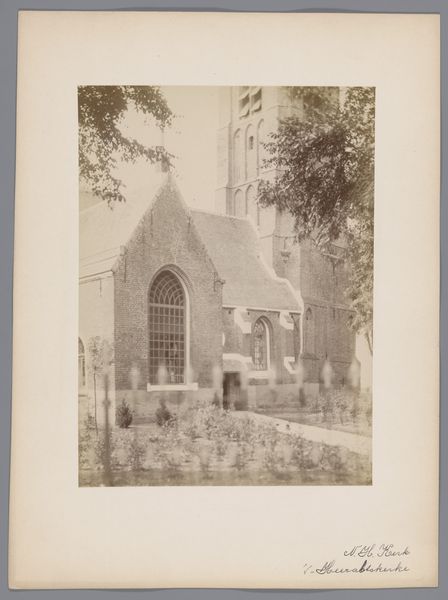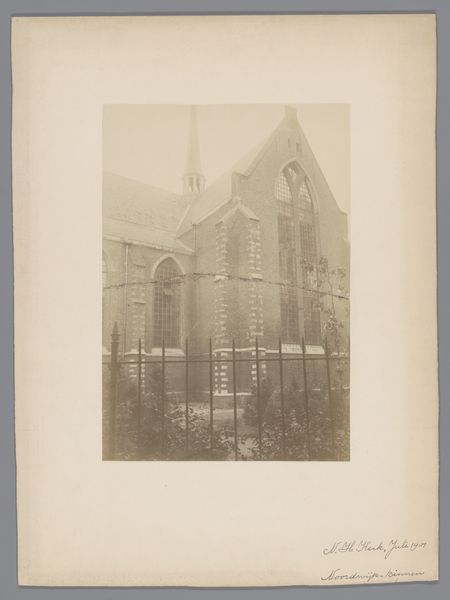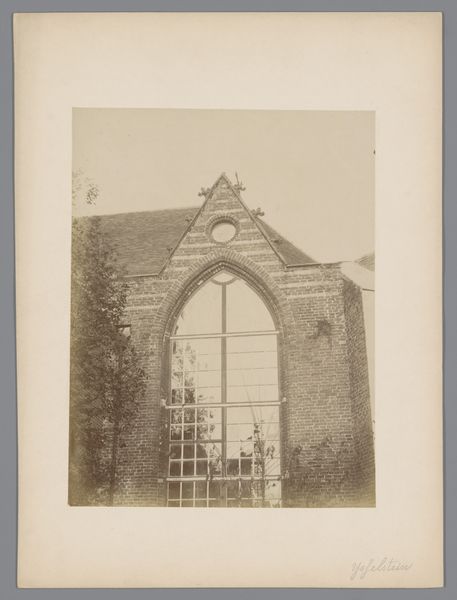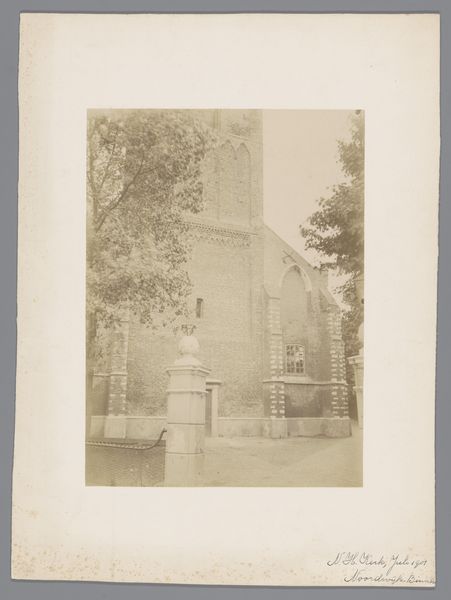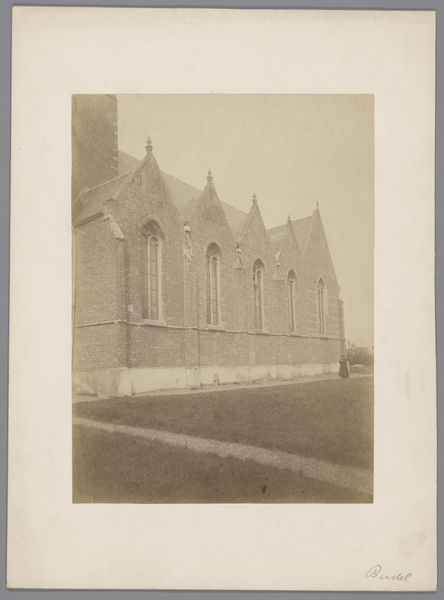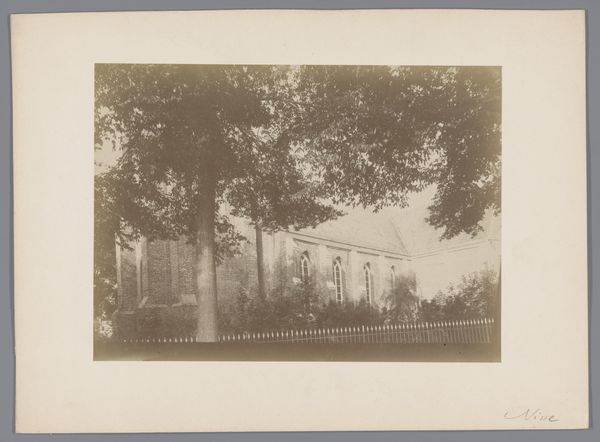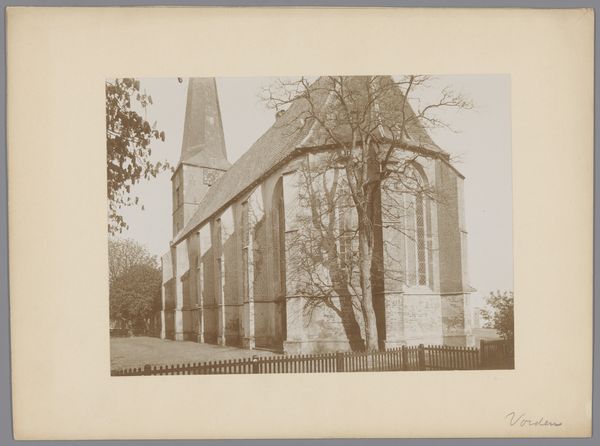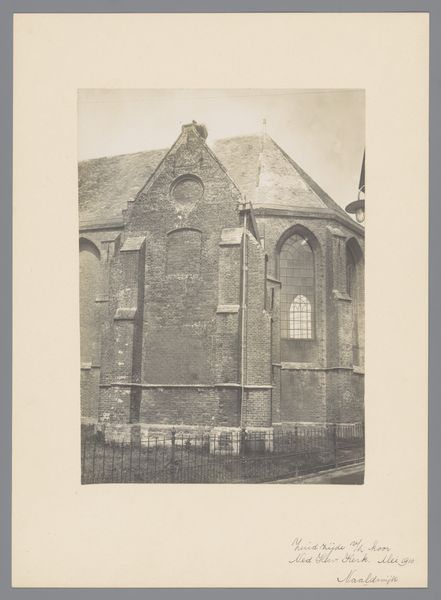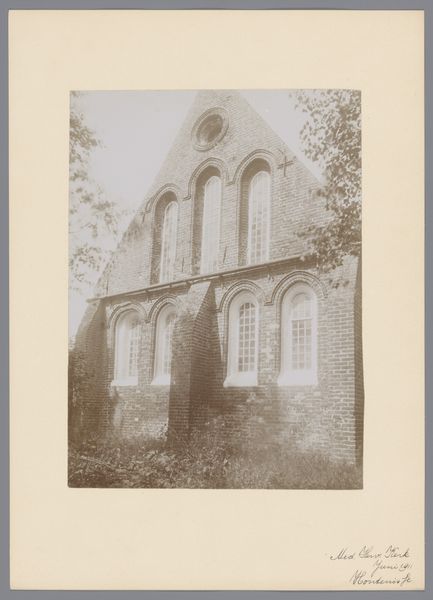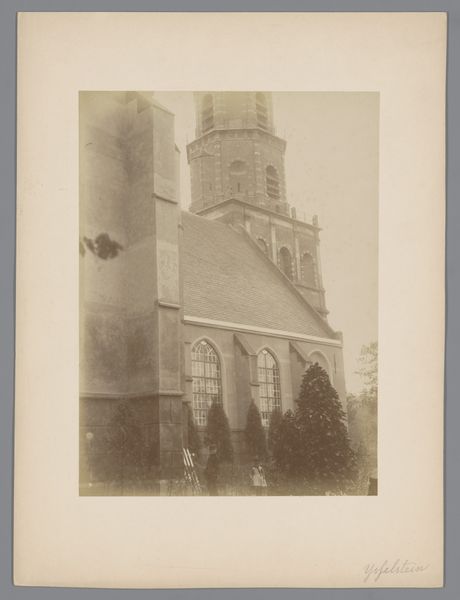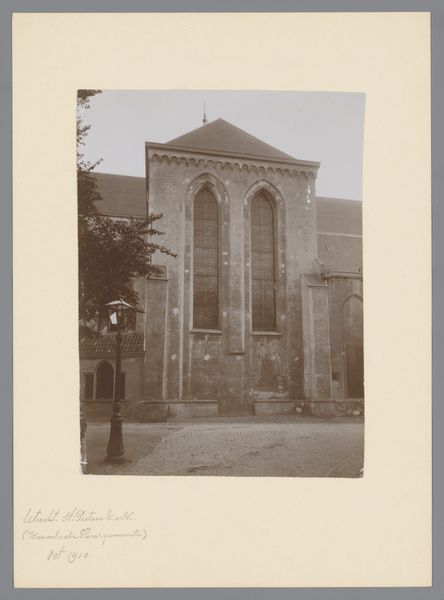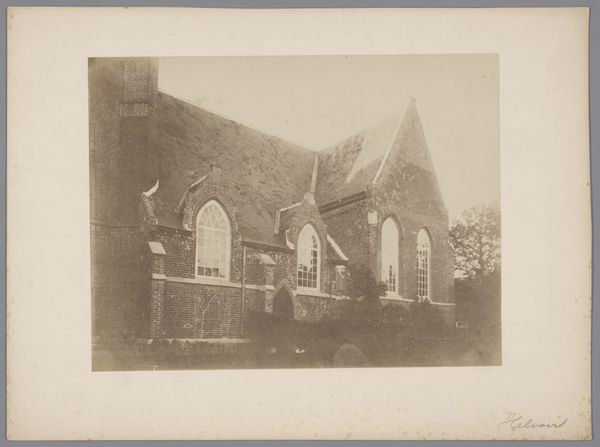
Dimensions: height 230 mm, width 158 mm
Copyright: Rijks Museum: Open Domain
This photograph of the Hervormde Kerk van Noordwijk-Binnen was taken anonymously, using the wet collodion process, a popular technique in the mid-19th century. This process demanded considerable skill: the photographer had to prepare, sensitize, expose and develop the glass plate all within a short timeframe. The resulting image, printed on albumen paper, has a distinctive tonal range and texture. The collodion's sensitivity to light renders a soft focus and atmospheric perspective, while the albumen print adds a subtle sheen to the surface. The photo’s sepia tonality, achieved through chemical development, lends the scene a sense of timelessness. What I find interesting is the implied labor in the image. The photograph captures the church, but also testifies to the photographer's labor, skill, and the material processes involved in creating this lasting image. It speaks to the transformation of materials into cultural artifacts, reminding us of the human agency behind every object we encounter.
Comments
No comments
Be the first to comment and join the conversation on the ultimate creative platform.
